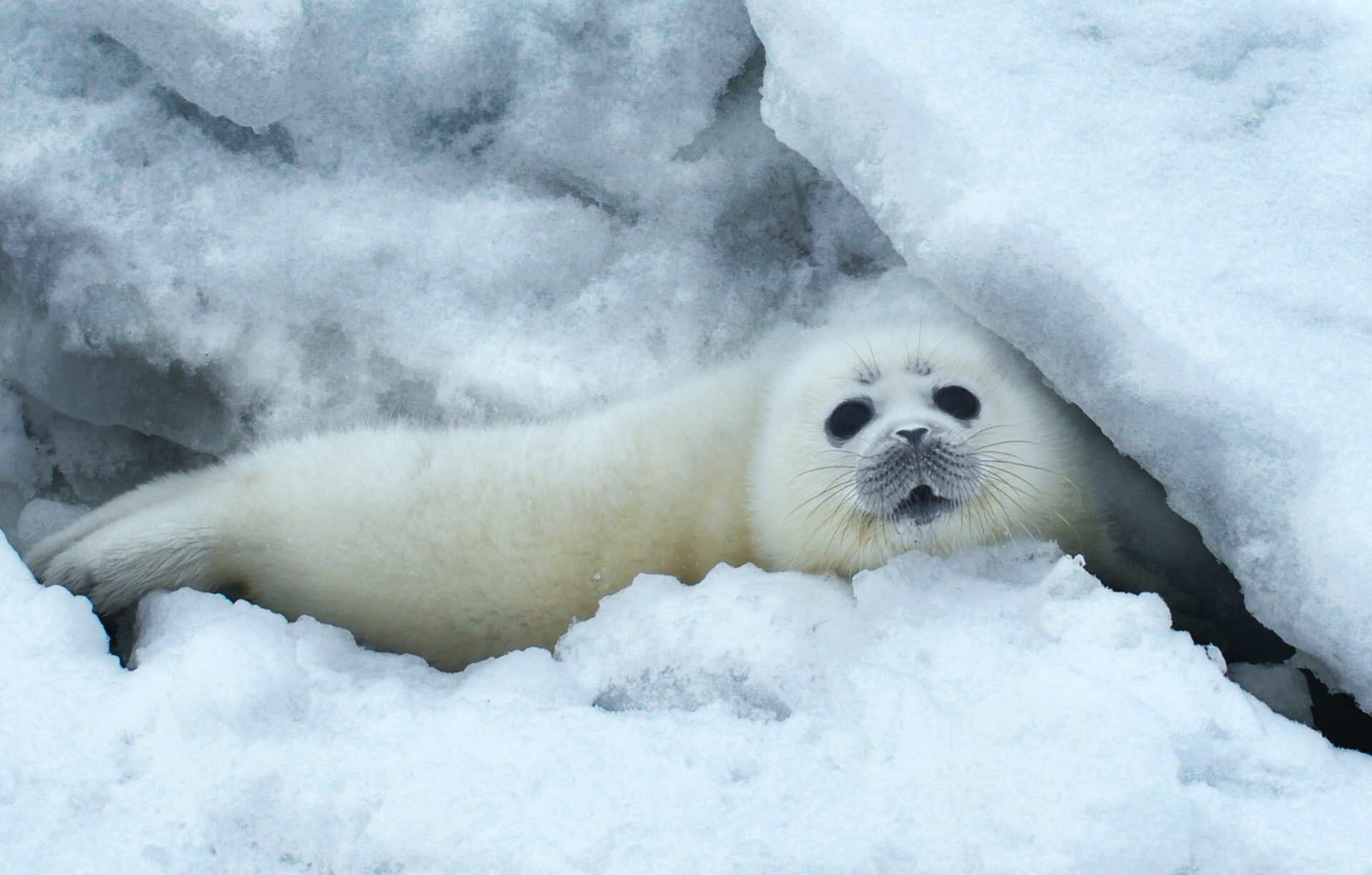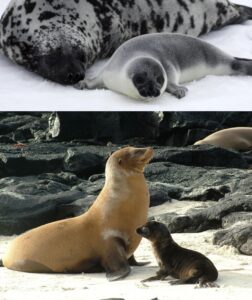The evolutionary genomics of life-history adaptations in pinnipeds

Project summary

Pinnipeds (seals, sea lions, fur seals and walrus) are keystone marine predators, and sentinels for marine ecosystem health. Advances in genomic technology open up the possibility to understand the genetics and molecular evolution underlying the adaptions of pinnipeds to the marine environment and the startling variation in ecology and life history present within the family. Understanding these mechanisms not only provides fundamental insights into the process of evolution, but is also important for assessing species vulnerability and responses to potential future environmental change. Some of the unique adaptions of pinnipeds may also be of relevance to human health and therapeutics, such as adaptations in fat metabolism.
Among the 33 extant species of pinnipeds there are a diverse array of adaptations to varying ecological conditions and life histories. One of the most striking aspects of pinnipeds is the variation exhibited in foraging and reproductive strategies, which are associated with among species body size variation, and the habitats they exploit. For example, adult body size can range from less than 100kg in Caspian seals to more than 2000kg for male elephant seals, while weaning times vary from 4-12 days in hooded and harp seals up to 18 months in some sea lions, and 2 years in the walrus. Pinnipeds have also evolved lipid rich milk, with fat content for some species exceeding 60%. The ecological drivers of these differences appear to be related to breeding substrates and ecological feeding niche exploited by species.
This project will build on rapidly growing genomic resources for pinnipeds, including de novo seal genome assemblies generated by the Goodman/O’Connell labs and other colleagues in the Pinniped Genome Consortium. In previous work we have identified 100s of genes that show signatures of adaptive evolution unique to different pinniped lineages and species which may underpin these adaptations. Many of these genes are associated with key elements of lipid metabolism and milk properties.
Our next aim is to understand how these genes have evolved across the pinniped lineage, and how past environmental changes created selection pressures shaping their evolution, and the evolution of pinnipeds overall. To do this we will use a variety of genomic approaches including sequencing of seal genomes, molecular evolution and phylogenomic analyses, and population genetic studies at the genomic level.

Secondly, we will also use ‘multi-omic’ approaches to understand the functional significance of amino acid substitutions between species in subsets of genes strongly associated with our traits of interest, and will evaluate how changes in gene expression might also contribute to evolution of unique traits such high fat content in pinniped milk, and tolerance of rapid fluxes of lipid in and out of blubber.
Resolving the genomic basis of such adaptations is important for understanding many aspects of pinniped biology, but may also contribute to predicting adaptive responses of pinniped species to future climate change and loss of sea ice.
Expected outcomes
New knowledge on the molecular adaptions underpinning variation in pinniped life-history strategies; an understanding of how past environmental change has driven the evolution of adaptations in pinnipeds, and the implications for pinniped adaptation to future climate change; an understanding of how specific amino acid substitutions and changes in gene expression profiles influence differences in traits such as lipid metabolism in blubber, and differences in milk composition across different pinniped species.
The student can expect to gain experience in cutting edge DNA sequencing and genomics methods, together with developing skills in bioinformatics, comparative genomics, molecular evolution and population genetics analysis. There may be opportunities for field work and to visit collaborators from the Pinniped Genomes Consortium in the UK and Europe.
Requirements
Hons degree and/or Masters in a topic relating to Biology, Zoology, Ecology, Biodiversity, Evolution, Genetics, Genomics, Bioinformatics, Maths & Biology etc. An interest in working at the interface of ecology, biodiversity and population/evolutionary genomics is desirable. Prior experience of bioinformatics is helpful but not essential. However interest in developing and using skills in genomics, bioinformatics and computing is essential.
Training
Training will be provided in population and evolutionary genetics/genomics, phylogenomics, molecular evolution, bioinformatics. There may be some opportunities to participate in fieldwork alongside seal ecologists. In addition the student will also benefit from wider general skills training provided within the framework of the Yorkshire Environmental Sciences DTN.
Research context and partners
The student will join the Ecology and Evolution group in the School of Biology, and will be integrated with the LIDA and Leeds Omics virtual institutes which encompass a large group of researchers working on genomics and bioinformatics related projects. The work will be conducted within the framework of our Pinniped Genomes Consortium, which is a collaboration of researchers from the UK, Europe, China and USA, including:
- Dr Ian Carr, University of Leeds
Further reading
López-Delgado J, Carr IM, Paradiso C, Gratton P, Colosimo G, van den Burg MP, Debrot AO, Sevilla C, Mat-Isa MN, Bayliss R, Gerber GP, Firdaus-Raih M, O’Connell MJ, Gentile G, Goodman SJ. (2025). A genomic perspective on the origins, evolution and adaptation of Galápagos iguanas. bioRxiv 2025.04.13.648612; doi: https://doi.org/10.1101/2025.04.13.648612.
Zhang P., Goodman S.J., O’Connell M.J., Bai S., Li S., (2023). Marine mammal genomes: Important resources for unravelling adaptation and evolution in the marine environment. The Innovation Geoscience 1(2), 100022. https://doi.org/10.59717/j.xinn-geo.2023.100022
Liu X, Schjøtt SR, Granquist SM, Rosing-Asvid A, Dietz R, Teilmann J, Galatius A, Cammen K, O Corry-Crowe G, Harding K, Härkönen T, Hall A, Carroll EL, Kobayashi Y, Hammill M, Stenson G, Frie AK, Lydersen C, Kovacs KM, Andersen LW, Hoffman JI, Goodman SJ, Vieira FG, Heller R, Moltke I, Tange Olsen M. 2022. Origin and expansion of the world’s most widespread pinniped: range-wide population genomics of the harbour seal (Phoca vitulina). Molecular Ecology 31: 1682-1699. DOI: http://dx.doi.org/10.1111/mec.16365
Baldwin MW, Toda Y, Nakagita T, O’Connell MJ, Klasing KC, Misaka T, Edwards SV, Liberles SD (2014) Evolution of sweet taste perception in hummingbirds by transformation of the ancestral umami receptor. Science 345 929-933. DOI:10.1126/science.125509
Foote, A., Liu, Y., Thomas, G. et al. Convergent evolution of the genomes of marine mammals. Nat Genet 47, 272–275 (2015). https://doi.org/10.1038/ng.3198
McCarthy, A. J., Shaw, M. A., Jepson, P. D., Brasseur, S. M., Reijnders, P. J., & Goodman, S. J. (2011). Variation in European harbour seal immune response genes and susceptibility to phocine distemper virus (PDV). Infection Genetics & Evolution, 11(7), 1616-1623. doi:10.1016/j.meegid.2011.06.002
Keane M, Semeiks J, Webb AE, et al. (2015) Insights into the evolution of longevity from the bowhead whale genome. Cell Reports 10 112-122. http://dx.doi.org/10.1016/j.celrep.2014.12.008
Yuan Y, Zhang Y, Zhang P, et al. (2021). Comparative genomics provides insights into the aquatic adaptations of mammals. Proceedings of the National Academy of Sciences (37) e2106080118; DOI: 10.1073/pnas.2106080118.
